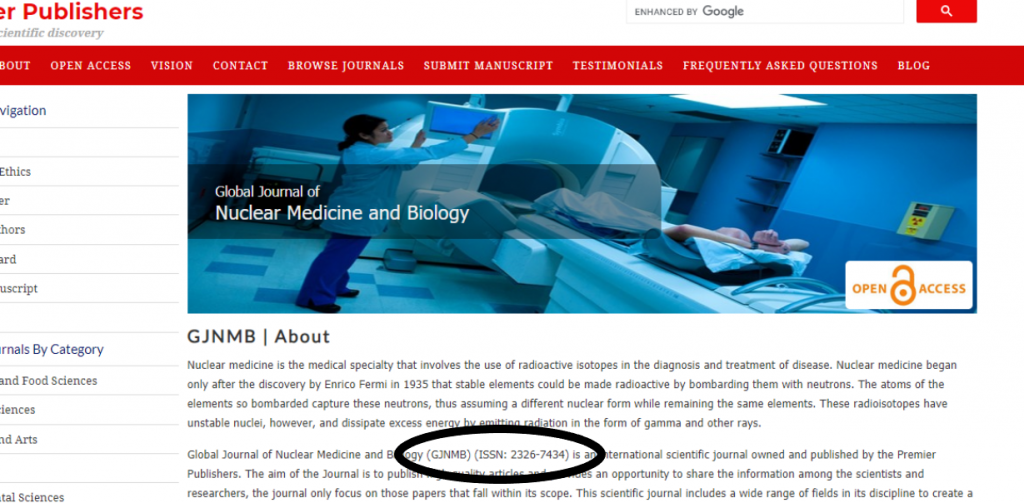There are many ways to skin a cat, and many ways to infer a journal could be predatory. In his latest blog post, Simon Linacre looks at the role the International Standard Serial Number, or ISSN, can play in the production of predatory journals.
For many reasons, the year 2020 will be remembered for the sheer volume of numbers that have invaded our consciousness. Some of these are big numbers – 80 million votes for Joe Biden, four million cases of COVID in the US in 2020 – and some of these will be small, such as the number of countries (1) leaving the EU at the end of the year. Wherever we look, we see numbers of varying degrees of import at seemingly every turn.
While numbers have been previously regarded as gospel, however, data has joined news and UFO sightings (seemingly one of the few phenomena NOT to increase in 2020) as something to be suspicious about or faked in some way. And one piece of data trusted by many authors in determining the validity or otherwise of a journal is the International Standard Serial Number, or ISSN.
An ISSN can be obtained relatively easily via either a national or international office as long as a journal can be identified as an existing publication. As the ISSN’s own website states, an ISSN is “a digital code without any intrinsic meaning” and does not include any information about the contents of that publication. Perhaps most importantly, an ISSN “does not guarantee the quality or the validity of the contents”. This perhaps goes some way to explain why predatory journals can often include an ISSN on their websites. Indeed, more than 40% of the journals included in Cabells’ Predatory Reports database include an ISSN in their journal information.
But sometimes predatory publishers can’t obtain an ISSN – or at least can’t be bothered to – and will fake the ISSN code. Of the 6,000 or so journals with an ISSN in Predatory Reports, 288 or nearly 5% have a fake ISSN, and this is included as one of the database’s behavioural indicators to help identify predatory activity. It is instructive to look at these fake ISSNs to see the lengths predatory publishers will go to in order to achieve some semblance of credibility in their site presence.

For some journals, it is obvious that the ISSN is fake as it looks wrong. In the example above for the Journal of Advanced Statistics and Probability, the familiar two groups of four digits followed by a hyphen format is missing, replaced by nine digits and a forward slash, which is incorrect.
For other journals, such as the Global Journal of Nuclear Medicine and Biology below, the format is correct, but a search using the ISSN portal brings up no results, so the ISSN code is simply made up.

More worrying are the few publications that have hijacked existing, legitimate journals and appropriated their identity, including the ISSN. In the example below, the Wulfenia Journal has had its identity hijacked, with the fake journal website pictured below.

If you compare it to the genuine journal shown below (the German homepage can be found here), you can see they list the same ISSN.

One can only imagine the chaos caused for a legitimate journal when its identity is hijacked, and this is just part of wider concerns on the effects of fake information being shared have on society. As always, arming yourself with the right information – and taking a critical approach to any information directed your way – will help see you through the morass of misinformation we seem to be bombarded with in the online world.


What is the implication if there exists an ISSN (e.g., 2642-3243) and there are no hits in any of the Cabell’s databases?
Thanks for reaching out, Brad. Generally speaking, this could mean we have: 1) not evaluated a journal with that particular ISSN for either Journalytics (by invitation or recommendation) or Predatory Reports (through our monitoring or community tips), or 2) we have evaluated the journal and it did not meet our criteria for either database.
In the event you searched for that specific ISSN (2642-3243) from Gavin Publishers – while we do not have that ISSN/journal included in our databases, we do list 103 other journals from Gavin Publishers in Predatory Reports. Due to the high number of predatory publications in operation by this publisher, it’s likely that the journal in question is also predatory and should therefore be avoided. It’s probable we have yet to conduct an evaluation of this journal. A tactic used by many predatory publishers is to publish a large number of journals on a wide breadth of topics, making tracking their activities all the more difficult.
Thanks again for reaching out, we’ll take this as a chance to reevaluate Gavin Publishers to be sure we are current and complete in reporting on their activity.
Hi Brad
Many thanks for getting in touch. As my colleague Mike suggested, we had not evaluated this particular journal although many other journals from this publisher are included in the Predatory Reports database. However, we have completed an evaluation of the journal over the holidays, and can confirm that we do believe this journal is predatory and have now included it in the database.
Sincere thanks for your input, which will hopefully help other researchers to avoid this journal
Best regards, Simon Linacre